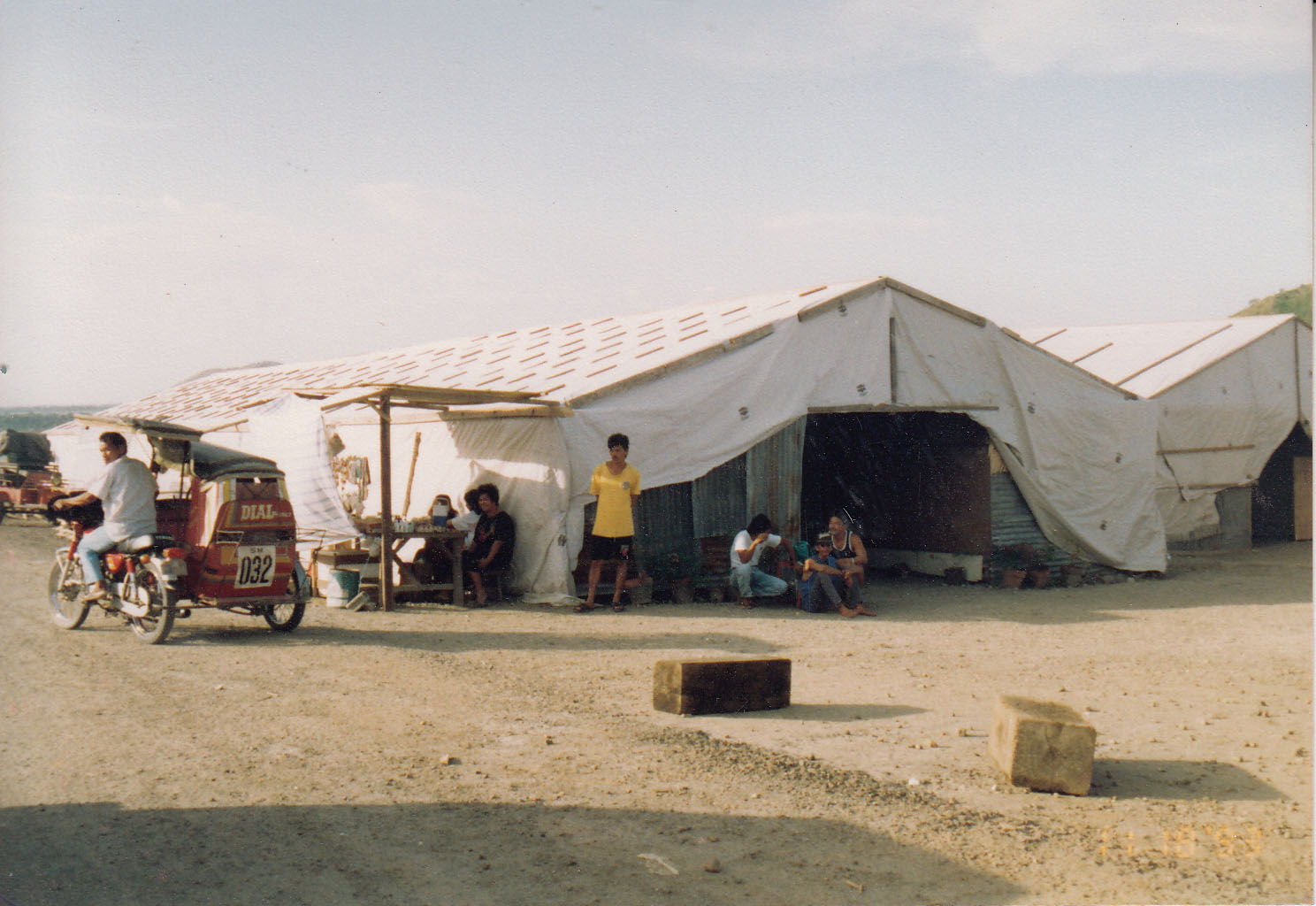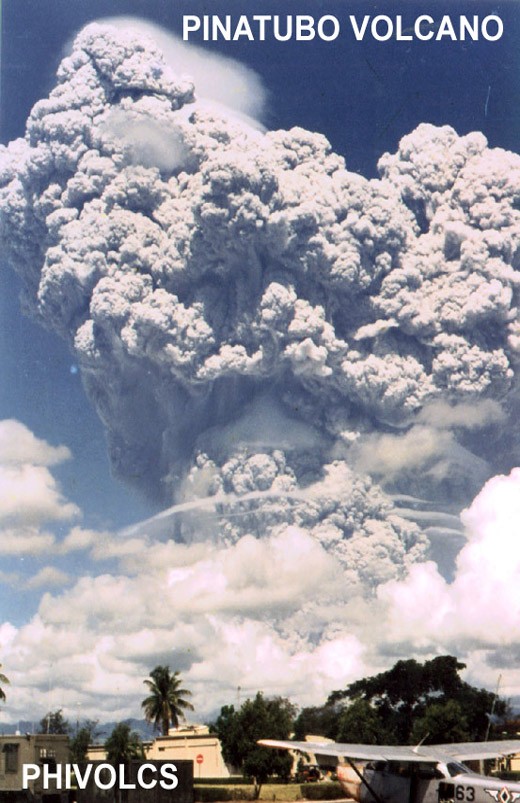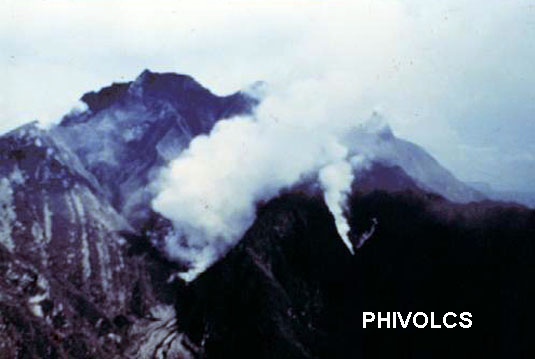In April 1991, the authorities in the Philippines began evacuating people from their homes located within 30 kilometres (km) of Mount Pinatubo. More than 60,000 people were evacuated by early June 1991. This huge undertaking came after recommendations from the Philippine Institute of Volcanology and Seismology (PHIVOLCS), and the US Geological Survey (USGS).
Pinatubo had not recorded any eruption in the past 500 years, yet just a few days after the evacuations, the first explosive eruptions of the volcano in centuries took place.

On 12 June gas-charged magma reached the surface of Pinatubo, creating a series of explosions that formed spectacular columns of ash that reached 24 km in height. But this was just the prelude.
Days later, more highly gas-charged magma accumulated on the surface and finally exploded, creating the largest volcanic eruption ever monitored on Earth. The eruption on 15 June sent a 35 km-high ash column directly into the stratosphere, covering an area of 125,000 km2.

On land, hot flows of gas, ash, and lahar descended violently into the valleys surrounding the volcano. Given the magnitude of this eruption, the manner in which the hazard was managed saved thousands of lives and more than US$250 million in properties.
How could the scientists forecast with such precision the time and magnitude of the eruption of a volcano that was dormant at that time?
10 weeks before the eruption, locals living at Pinatubo contacted the scientists of PHIVOLCS to report the appearance of plumes of steam and sulfur. The director of PHIVOLCS, Dr Raymundo Punongbayan, set up a team that installed portable seismometers in the area. As the seismic activity increased, Dr Chris Newhall from the USGS and a small team joined the investigation.
Together, they installed seven telemetered seismic sites, two telemetered tiltmeters to measure ground deformation, allowing the team to access those data in real-time. They also used a COSPEC (correlation spectrometry) instrument to measure sulfur dioxide gases. As there were no previous records of Pinatubo’s eruptions, they also mapped the geological sediments of past eruptions’ materials to create a hazard map for the worst-case scenario.

By early June, they realised that the levels of seismicity and sulfur dioxide gas emissions indicated that large amounts of magma were moving through the volcano conduits towards the surface. They alerted the local authorities about an imminent eruption and the potential magnitude of the event, which led to the evacuation of those living in the vicinity of Pinatubo. The amount of information that the scientists of PHIVOLCS and USGS gathered in just a few weeks is quite remarkable. Moreover, the success of the hazard management was only possible through the trust fostered between the locals, the volcanologists, and the authorities.

Pinatubo’s seismic data (depth and magnitude) derived from the seismic network, the gas emission, and the deformation during the unrest and after the eruption (figure 1 below) is available at the World Organization of Volcano Observatories database (WOVOdat). It was co-created by Professor Chris Newhall in the 80’s and is currently led by Professor Fidel Costa at EOS. The database gathers unrest of volcanoes all over the world and makes the carefully organised data public so it can be used to construct models that help forecast eruptions.

As experience has taught us, volcanic forecasts are relevant not only for countries with volcanoes – in 1991 Pinatubo’s eruption disrupted the airspace of commercial flights and its ash reached many countries including Singapore. If a repeat of the 1991 eruption of Pinatubo were to occur today, the repercussions would have been much greater. As an example, Eyjafjallajökull’s eruption in 2010, with a Volcanic Explosivity Index (VEI) of 4, forced the shutdown of Europe’s air space for several weeks. In comparison, Pinatubo’s 1991 eruption was assigned a VEI of 6. What consequences could result?
---
Pinatubo data can be visualised and downloaded using WOVOdat interactive online tools. Click on the links below for more.
We would like to acknowledge the Philippine Institute of Volcanology and Seismology and the US Geological Survey for providing WOVOdat with the data.
(Source of thumbnail image: David Harlow/USGS)